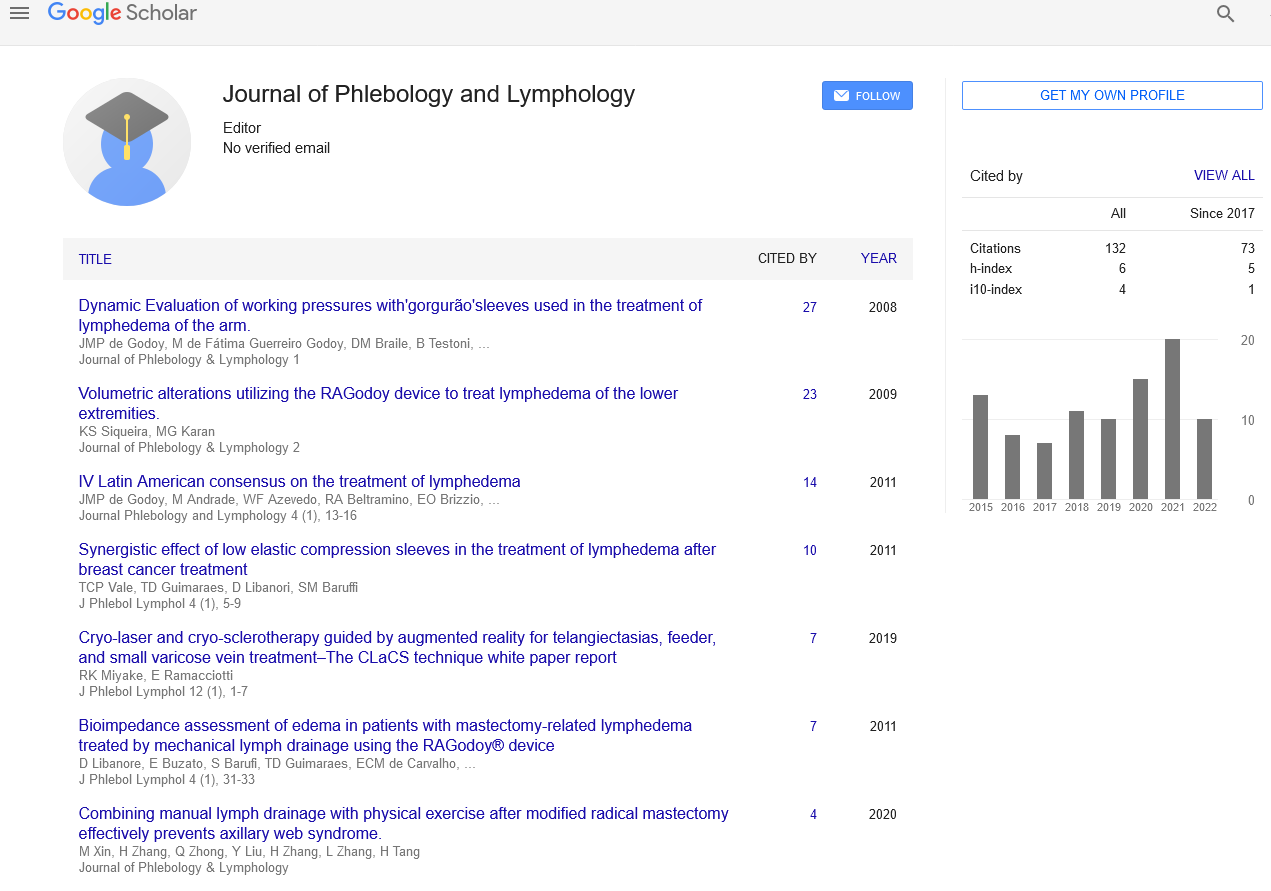
Sign up for email alert when new content gets added: Sign up
Abstract
Hybrid endoluminal treatment of incompetence of the great saphenous vein with radiofrequency and foam sclerotherapy: initial experience
Author(s): Jorge Hernando Ulloa, Heinz Hiller, Samira AlÃÂÂВ, Jairo RamÃÂÂВrez,The treatment of incompetence of the great saphenous vein (GSV) by radio frequency (RF) or laser has been associated with neuralgia and other complications due to the extension of thermal injury. These techniques require anesthesia and have a major disadvantage in the management of tortuous trunks due to the stiffness of the catheter or optical fiber used in the treatment. Foam sclerotherapy is a new option to treat larger veins, painlessly reaching varicosities, however the treatment of the GSV raises the possibility of a sudden reopening of the saphenofemoral junction (SFJ). Our group developed an approach that combines the benefits of thermal ablation and foam sclerotherapy. Methods: Forty‐six patients (39 female) classified as C2‐C4 (CEAP classification) with a mean age of 58.4 years and incompetence and tortuosity of the GSV as seen by duplex ultrasound where included in this study. Two patients were lost during follow‐up. The hybrid procedure was performed using ultrasound guided percutaneous access of the GSV with a new short RF catheter (VNUS ClosureFAST) two centimeters distal to the SFJ under local anesthesia. Thermal occlusion of the saphenofemoral junction (SFJ) and the subjacent segment of the GSV were achieved. Before retracting the device, 8 mL of 1% Lapidium Chloride foam (Sklerol, ICV Pharma, Colombia) was injected using physiological gas (70% CO2/30% O2); the region was gently massaged with the transducer to spread the foam distally. The patient was followed‐up for 6 months which including duplex ultrasound to check the ligation of the GSV and SFJ. Results: Forty‐four patients completed the follow‐up period. There were no major complications. Seven patients reported pain in the groin region immediately after the procedure. Two cases presented with superficial phlebitis in the calf due to lack of compression and required microthrombectomy. At six months, the GSV and SFJ were occluded in forty‐one patients as demonstrated by duplex ultrasound but the other three required a second dose of foam in the recanalized segment. Conclusions: This is a preliminary report of a hybrid procedure that involves the use of heat to completely ligate the SFJ and, at the same time, foam to treat the GSV and associated varicosities, without the need of further thermal ablation of the venous trunk or the use of phlebectomy. This hybrid procedure combines the best of two techniques, minimizing their disadvantages and potentiating their advantages. The occlusion rate seems promising but further studies should evaluate the true effectiveness over time.




